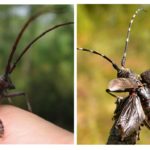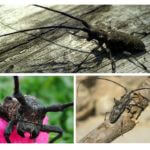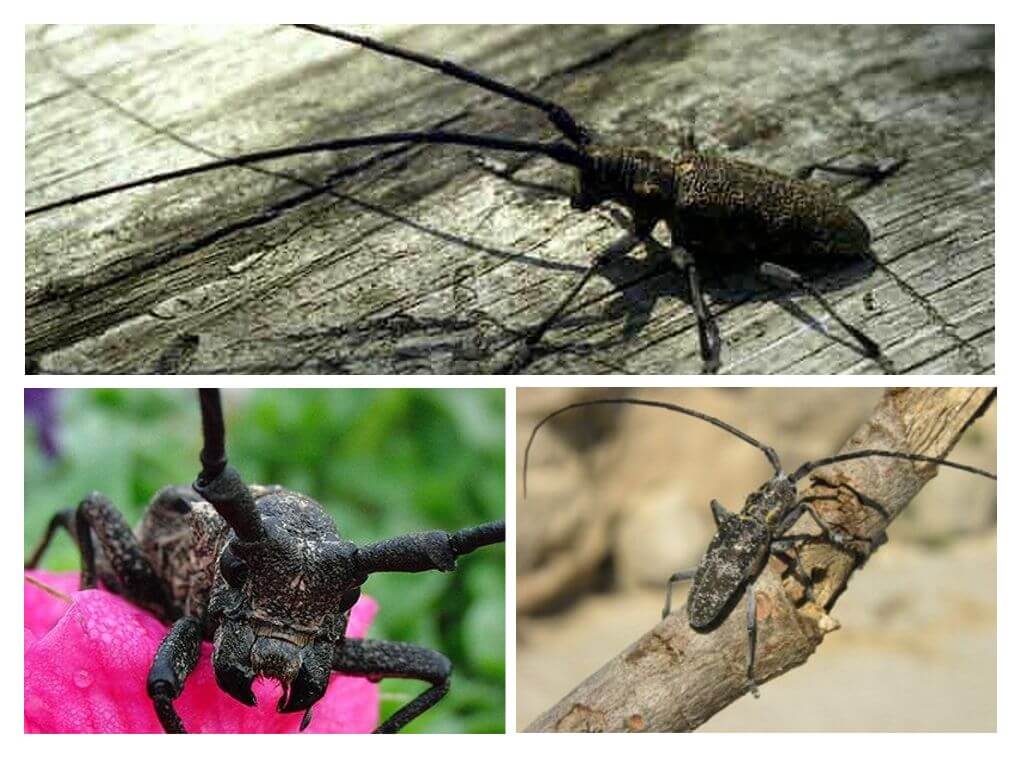Black Pine Barbel
- Pine Barbel
- Insect habitat
The black pine barbel is a beetle that belongs to the beetle group. Meet this representative barbel almost everywhere: in Europe and Africa, in Siberia and in the Caucasus. This is one of the most dangerous pests of pine. In rare cases, this black beetle damages fir, spruce and even larch.
Appearance
The black pine barbel is an insect whose body size reaches 2.5 cm. The beetle has a black color with a bronze tint. On flat, having a granular surface, the elytra are marked interspersed with red and gray hairs.The main feature of the pine barb is its luxurious mustache, the length of which for males is 2 times longer than the length of their own body. In females, they have a variegated color. The shield has a white-yellow, and sometimes rust-yellow cover. Below is a pine barbel in the photo.
Lifestyle
Newly-born beetles leave their cradles in the wood at the end of spring. They lead active lifestyles from late June to September, using fresh young bark as an additional food.
Interesting!
The black pine barbel is a photophilous insect, therefore it gives preference to detached or thinned plantings. In mixed forests one can observe a sharp drop in the number of pine barbs.
The insect settles on the entire trunk of the tree: moreover, female individuals appear more frequently in the butt part, males - in the upper part.
Breeding
The life expectancy of insects is quite small - they live a little more than 3 months. Therefore, females are trying as soon as possible to lay eggs in the notches that they make for this purpose in the pine bark. After 1-2 weeks from the eggs appear the larvae feeding on sapwood and bast.Gnawing on the whole site, they rush closer and closer to the tree layer. Periodically, they are forced to crawl out of their moves, expanding and cleansing them from drilling flour.
At the end of the tunnel, the larva settles for a crib in which she spends the winter. The process of pupation ends at the end of spring. After that, a young black pine barbel, gnawing through a tunnel, comes out. However, the development of one-year-old larvae is not always the case, unfavorable conditions inhibit its development, as a result of which a pupa beetle appears only after 2 years.
Harm done
Insect larvae cause great damage to forestry. Making deep moves in the wood of non-smoked logs, they make this timber unusable.









